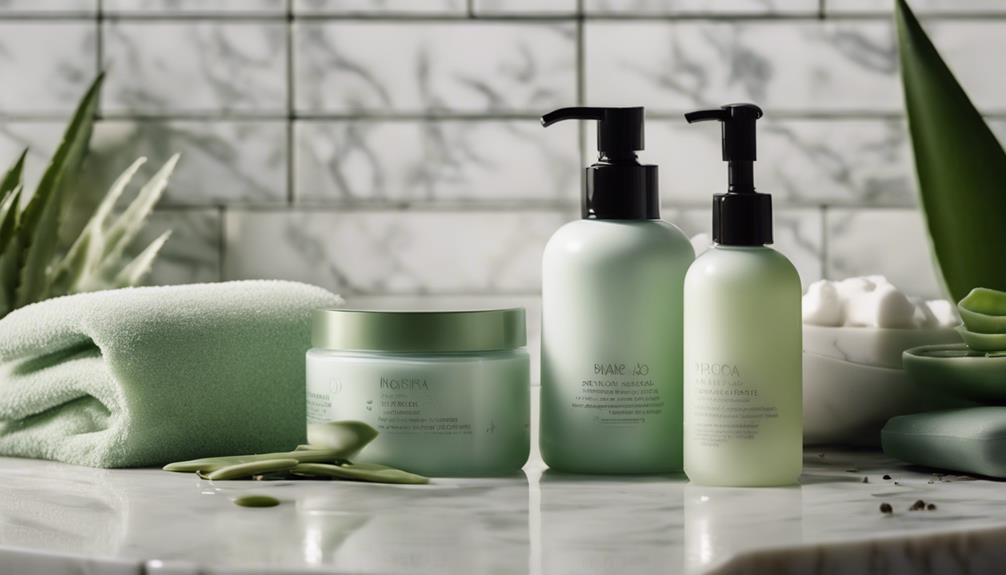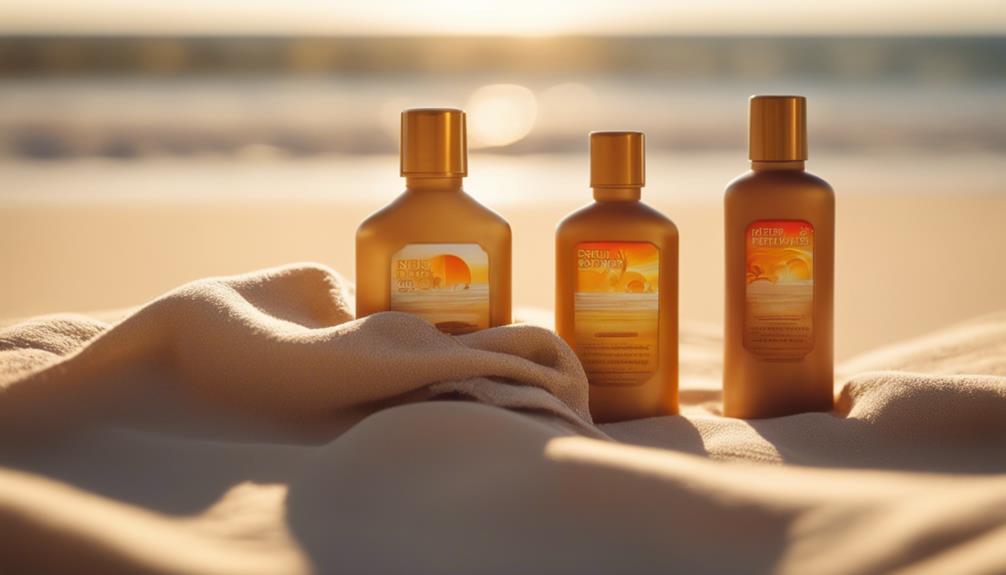To effectively manage shine and prevent breakouts, it is important to maintain a consistent skincare routine for oily skin. Begin by cleansing your skin twice a day using a gentle, non-drying cleanser. Follow up with an alcohol-free toner to help balance the pH of your skin. Use a lightweight, oil-free moisturizer to keep your skin hydrated without adding excess oil. Additionally, incorporate targeted treatments with salicylic acid or niacinamide on problem areas. Remember to apply a broad-spectrum, oil-free sunscreen daily to protect your skin. Avoid using heavy products and harsh exfoliants that can exacerbate oiliness. By following these steps, you can effectively control shine and prevent breakouts, with more helpful tips to explore in the future.
Key Takeaways
- Cleanse twice daily with a gentle, sulfate-free cleanser to effectively remove excess oil without stripping moisture.
- Use an alcohol-free toner to balance skin's pH and minimize enlarged pores.
- Apply a lightweight, oil-free moisturizer to hydrate without adding shine or clogging pores.
- Incorporate targeted treatments with salicylic acid or benzoyl peroxide to address specific breakouts effectively.
Understanding Oily Skin
Oily skin results from excess sebum production, making your face appear shiny, especially in the T-zone. This overproduction of sebum can lead to clogged pores, which trap bacteria and often result in acne breakouts like blackheads and whiteheads. While having oily skin can give you a youthful look due to fewer visible fine lines and wrinkles, it also requires diligent care to manage shine and prevent breakouts.
Several factors influence your oily skin, including hormonal changes, stress, diet, lifestyle, and genetics. Understanding these unique traits is essential for choosing the right skincare products tailored to your skin type. You'll want to look for lightweight, oil-free products that help control excess oil without stripping your skin of its natural moisture.
To effectively manage shine, consider products with salicylic acid or benzoyl peroxide, which can help reduce acne. Additionally, incorporating a gentle exfoliation routine can keep your pores clear.
Identifying Your Skin Type
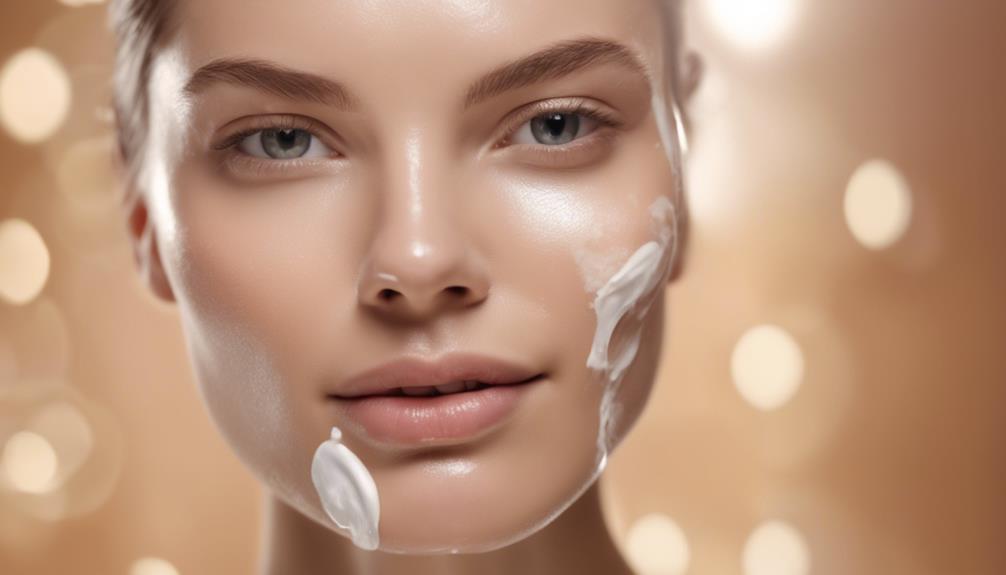
To effectively manage your skincare, it's essential to accurately identify your skin type. Knowing whether your skin is oily, combination, or something else will help you tailor your skincare routine for the best results.
Oily skin is typically characterized by an overproduction of sebum, resulting in a shiny appearance, particularly in the T-zone. If you feel an oily sensation within 30 minutes after cleansing, it's a strong indicator of oily skin.
Here's how to identify your skin type:
- Observe Shine: Notice how your skin feels and looks throughout the day. If you see excess shine, especially in the T-zone, you likely have oily skin.
- Feel for Oily Texture: After cleansing, if your skin feels slick shortly after, it's another sign of oiliness.
- Check for Breakouts: Frequent acne or blemishes can indicate oily skin.
- Self-Assessment: Differentiate between oily and combination skin by checking if other areas (like cheeks) feel dry.
For precise identification, consider consulting a board-certified dermatologist. They can help you understand your skin's unique characteristics.
Key Ingredients for Oily Skin
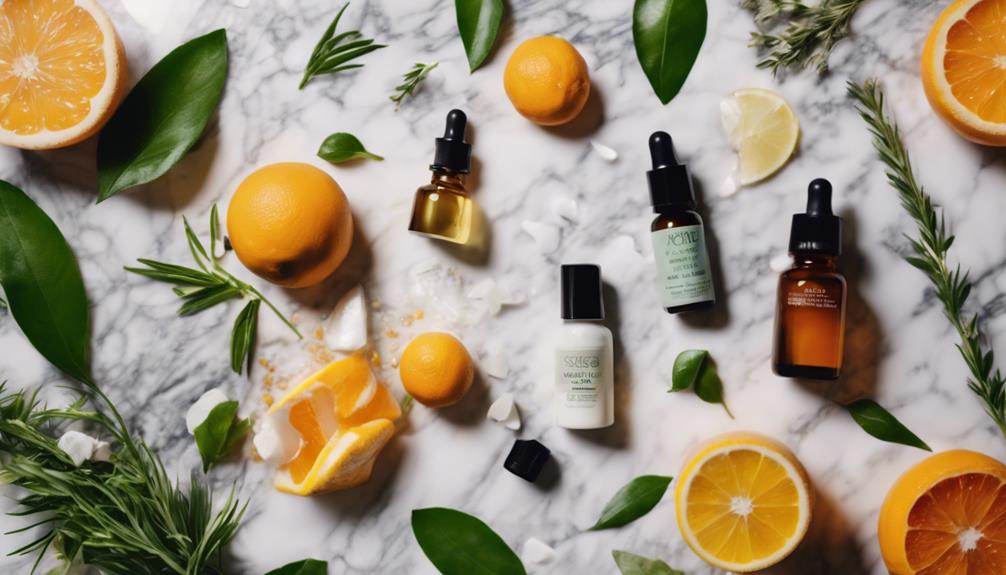
Choosing the right ingredients can make a significant difference in managing oily skin effectively.
Start with Salicylic Acid, an oil-soluble powerhouse that dives deep into pores to dissolve excess oil and dead skin cells, preventing acne breakouts and promoting clearer skin. Pair this with Niacinamide, which not only calms inflammation but also regulates sebum production, helping to minimize enlarged pores.
Next, incorporate Hyaluronic Acid into your skincare routine. This ingredient retains moisture without adding oil, providing hydration that your skin craves. Zinc PCA is another essential; it regulates oil and offers anti-inflammatory benefits, further reducing the risk of acne breakouts while soothing irritated skin.
Lastly, don't overlook Retinol. This ingredient refines skin texture and helps prevent clogged pores, making it invaluable for oily skin types.
Recommended Skincare Routine
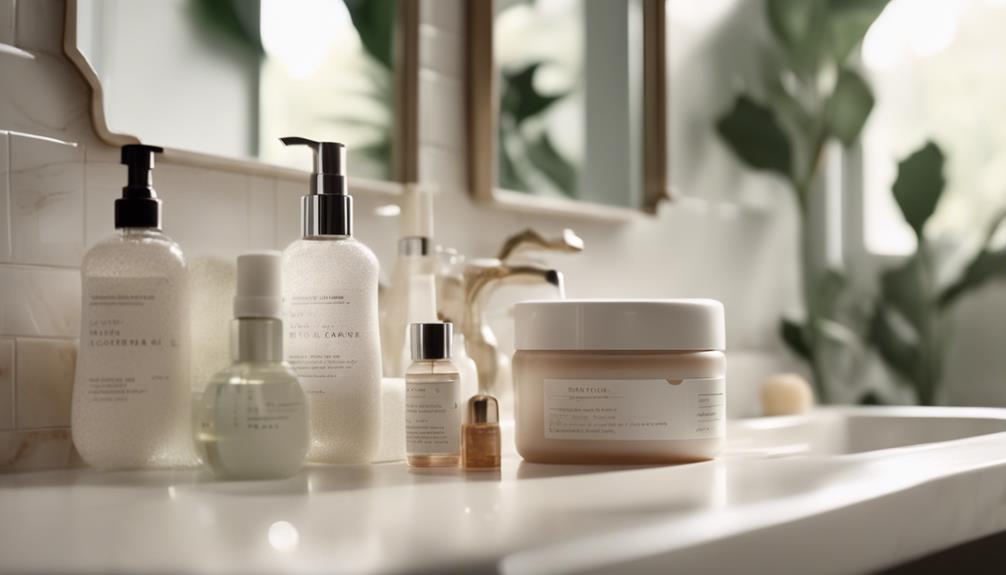
A well-structured skincare routine can greatly improve the health and appearance of your oily skin. Follow these steps for effective management of shine and prevention of breakouts:
- Cleansing: Start by cleansing your face twice daily with a gentle, non-drying cleanser, like CeraVe Foaming Facial Cleanser. This helps remove excess oil without stripping moisture.
- Toner: Next, use an alcohol-free toner such as Paula's Choice Skin Perfecting 2 BHA Liquid Exfoliant. This balances your skin's pH, minimizes enlarged pores, and provides gentle exfoliation.
- Moisturizer: Apply a lightweight, oil-free, non-comedogenic moisturizer like Neutrogena Hydro Boost. Hydration is essential for all skin types, even oily skin, to maintain balance without clogging pores.
- Targeted Treatments: After toning, apply treatments with salicylic acid or benzoyl peroxide to trouble spots. These ingredients help treat and prevent breakouts effectively.
Essential Products to Use
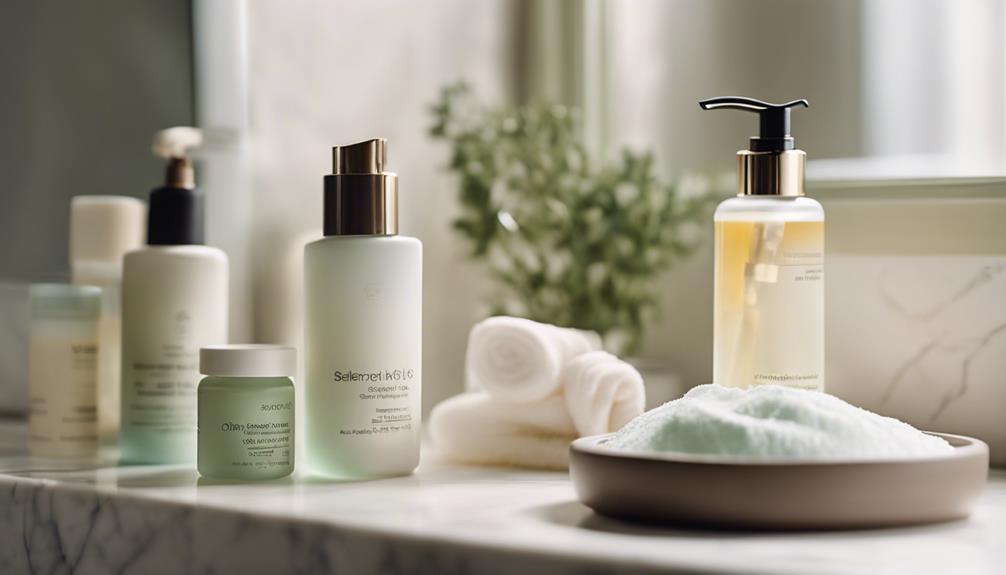
When it comes to managing oily skin, choosing the right products is essential.
You'll want to focus on key ingredients that effectively combat excess oil and breakouts.
Let's explore the recommended product types and daily application tips to keep your skin balanced and healthy.
Key Ingredients for Efficacy
Incorporating key ingredients like salicylic acid and niacinamide into your skincare routine can greatly improve the management of oily skin. These powerful components tackle excess sebum while providing additional benefits to prevent breakouts and enhance overall skin health.
Here are four essential ingredients to look for in your skincare products:
- Salicylic Acid: This oil-soluble beta hydroxy acid penetrates pores to exfoliate and reduce oil buildup, making it vital for acne treatment.
- Niacinamide: Known for its antibacterial properties, niacinamide controls sebum production and calms redness, helping to create a balanced complexion.
- Hyaluronic Acid: A powerful humectant, hyaluronic acid retains moisture without adding oil, ensuring your skin stays hydrated without clogging pores.
- Zinc PCA: This ingredient regulates sebum production and provides anti-inflammatory benefits, making it ideal for calming oily and acne-prone skin.
Recommended Product Types
To effectively manage oily skin, it's essential to choose the right product types that cater specifically to your skin's needs. Start with gentle cleansers that are non-drying and sulfate-free. Products like CeraVe Foaming Facial Cleanser or PanOxyl Acne Foaming Wash can help remove excess oil without irritating your skin.
Next, opt for oil-free moisturizers that are lightweight and non-comedogenic, such as Neutrogena Hydro Boost or CeraVe Ultra-Light Moisturizing Lotion. These products hydrate your skin without clogging pores.
Incorporate targeted treatments containing salicylic acid or niacinamide, like Paula's Choice 2% BHA Liquid Exfoliant, to help regulate oil production and prevent breakouts.
Don't forget to use hydrating toners, preferably alcohol-free, like CeraVe Hydrating Toner, which can help minimize pores and balance your skin's pH after cleansing.
Finally, apply a broad-spectrum sunscreen daily. Choose an oil-free, non-comedogenic option, such as EltaMD UV Clear SPF 46, to protect your skin from sun damage while preventing acne flare-ups.
Following these guidelines will help you achieve a clearer, healthier complexion.
Daily Application Tips
Establish a consistent daily routine by cleansing, toning, treating, moisturizing, and protecting your skin with the right products tailored for oily skin. Follow these essential steps to manage shine and prevent breakouts effectively:
- Cleanse Daily: Wash your face twice daily with a gentle, non-drying cleanser to remove excess oil and impurities without stripping moisture.
- Incorporate Toner: After cleansing, use an alcohol-free toner with soothing ingredients like Witch Hazel and Aloe Vera. This helps hydrate your skin and minimize enlarged pores.
- Apply Targeted Treatments: Use serums containing Salicylic Acid or Niacinamide post-toning. These treatments target acne, reduce sebum production, and promote clearer skin.
- Moisturize Lightly: Even oily skin needs hydration. Opt for an oil-free moisturizer, like Neutrogena Hydro Boost, to maintain hydration without clogging pores.
Lastly, never skip sunscreen. Apply a broad-spectrum, oil-free sunscreen with at least SPF 30 daily to protect against UV damage, which can worsen oiliness and acne.
Stick to this routine, and you'll enjoy better shine management and clearer skin!
What to Avoid in Skincare
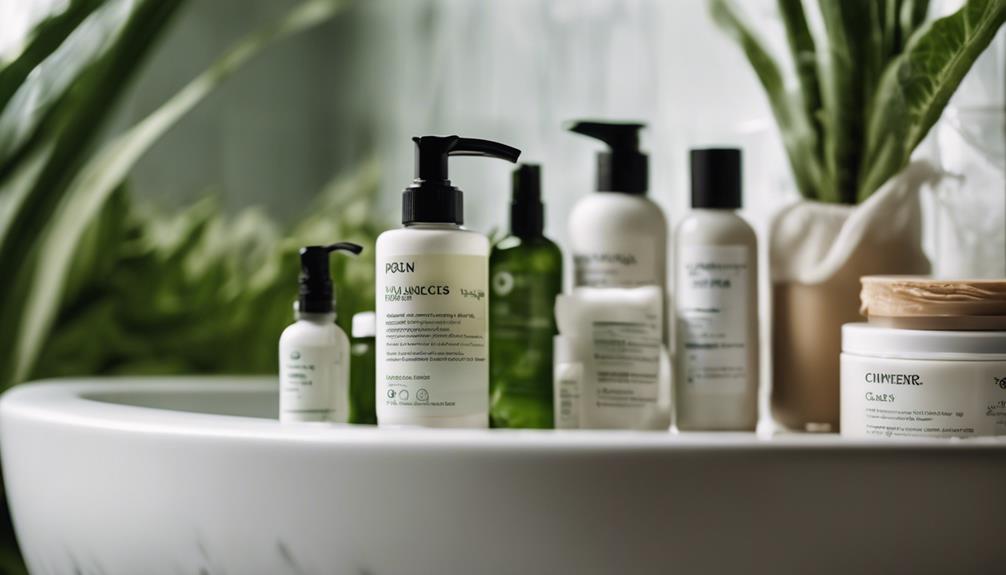
When managing oily skin, it's crucial to avoid certain ingredients that can worsen your condition and lead to breakouts.
First, steer clear of heavy moisturizers containing oil-based ingredients like cocoa butter or lanolin. These can clog pores and exacerbate oiliness. Fragrance is another culprit; it can cause irritation and sensitivity, particularly for those with oily or acne-prone skin.
You should also avoid alcohol-based toners, as they may cause over-drying, prompting your skin to produce even more oil in response. Always check product labels for comedogenic ingredients, as these can block pores and lead to breakouts.
Additionally, be cautious with products that contain parabens, sulfates, and phthalates. These harmful ingredients can trigger skin issues, including acne and irritation.
By avoiding these problematic components, you'll better manage your oily skin and reduce the likelihood of breakouts. Always prioritize non-comedogenic, gentle formulas designed specifically for oily skin to achieve the best results.
Tips for Managing Breakouts
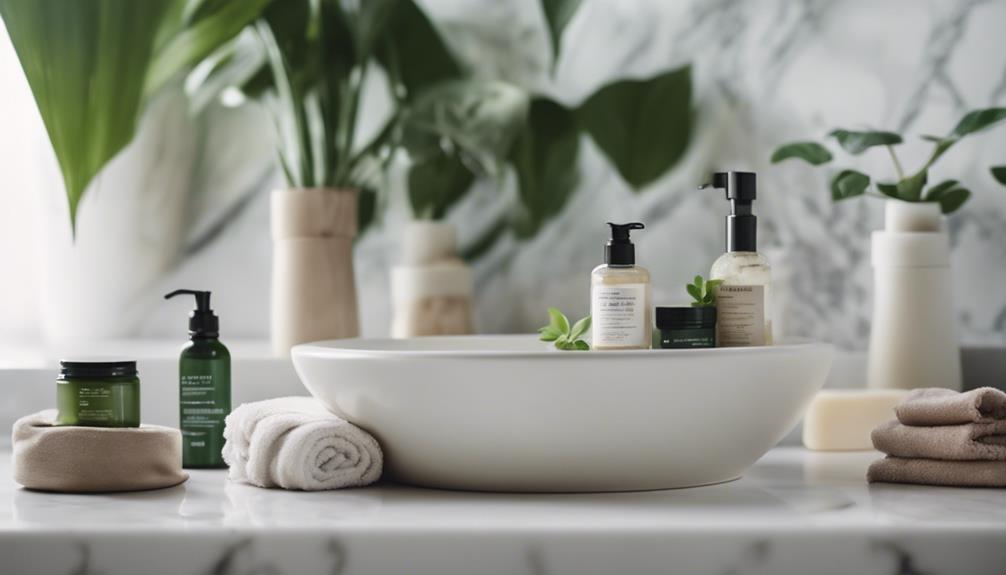
When it comes to managing breakouts, spot treatments can be a game changer for targeting specific areas of concern.
Pair that with a consistent exfoliation routine, and you'll be on your way to clearer skin.
Let's explore how these strategies can help you take control of your complexion.
Spot Treatment Options
How can you effectively tackle breakouts? Spot treatments like benzoyl peroxide, salicylic acid, and sulfur-based options can help manage those pesky blemishes. Here's how to choose and use them effectively:
- Benzoyl Peroxide: This powerful ingredient kills acne-causing bacteria and reduces inflammation. Apply it directly onto active breakouts for targeted treatment.
- Salicylic Acid: Oil-soluble and able to penetrate pores, salicylic acid exfoliates from within, making it great for treating blackheads and whiteheads. Use it on blemishes as soon as you notice them.
- Sulfur-based Treatments: These help absorb excess oil and calm redness. They're effective for active breakouts and can be used as a spot treatment.
- Application Tips: Always apply spot treatments after cleansing and toning your skin. Be careful not to overuse them, as it can irritate and dry out surrounding skin.
Consistent Exfoliation Routine
A consistent exfoliation routine is essential for managing breakouts, as it helps clear away dead skin cells that can clog pores and lead to acne.
If you have oily skin, incorporating exfoliation into your skincare routine is crucial. Aim to exfoliate 2-3 times a week to balance oil production without irritating your skin.
Chemical exfoliants, like salicylic acid, are particularly effective for oily skin. They penetrate deep into pores, promoting natural exfoliation without the harshness that physical scrubs can bring.
You can also consider using gentle exfoliating toners that contain beta hydroxy acids (BHAs). These toners help maintain a smoother complexion and minimize the appearance of enlarged pores, keeping your skin looking less shiny.
Continuous Learning and Resources
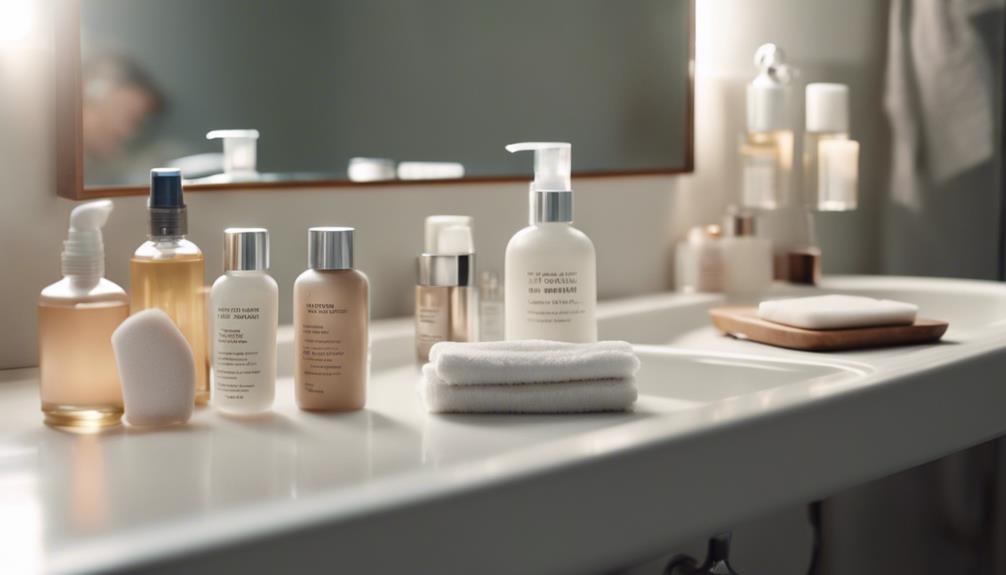
Continuous learning about skincare for oily skin empowers you to choose the best products and techniques for managing breakouts effectively. By staying informed about key ingredients and trends, you can enhance your skincare routine and tackle acne more efficiently. Here are some resources to help you on your journey:
- Consult a Dermatologist: Regular consultations can provide personalized insights tailored to your skin's unique needs.
- Read Articles: Look for content about non-comedogenic moisturizers and the impact of diet on acne. Understanding these factors can help you make informed choices.
- Join Online Communities: Engaging with others facing similar oily skin challenges offers support and shared experiences, fostering continuous learning.
- Stay Updated on Products: Follow the latest trends, like the effectiveness of salicylic acid and niacinamide, to find the right products that won't exacerbate oiliness.
What Are the Best Ways to Control Oil and Shine in a Skincare Routine for Oily Skin?
When dealing with oily skin, the best skincare routine for oily skin can help control oil and shine. Start with a gentle cleanser to remove excess oil without stripping the skin. Use a lightweight moisturizer with ingredients like salicylic acid to maintain hydration while minimizing oil production. And don’t forget to use a mattifying primer before applying makeup.
Conclusion
So, you've got oily skin, huh? The irony is that while you might feel like your face is a slip-and-slide, managing shine and breakouts isn't as intimidating as it seems.
By sticking to a tailored skincare routine filled with the right ingredients and avoiding the wrong ones, you can embrace a fresh, matte complexion.
Who knew that battling oil could lead to clearer skin? Immerse yourself in your new routine, and watch your oily skin transform into your best-kept secret!
